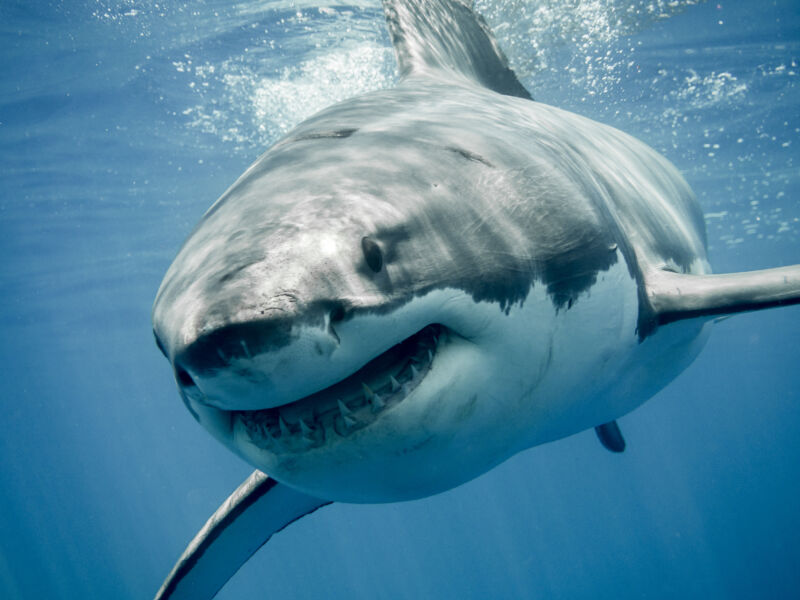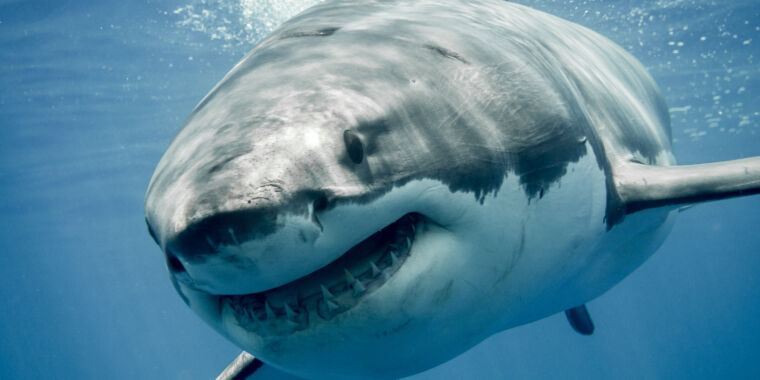A scientific mission to save the sharks

A hammerhead shark less than one meter long swims frantically in a plastic container aboard a boat in the Sanquianga National Natural Park, off Colombia’s Pacific coast. It is a delicate female Sphyrna corona, the world’s smallest hammerhead species, and goes by the local name cornuda amarilla—yellow hammerhead—because of the color of its fins and the edges of its splendid curved head, which is full of sensors to perceive the movement of its prey.
Marine biologist Diego Cardeñosa of Florida International University, along with local fishermen, has just captured the shark and implanted it with an acoustic marker before quickly returning it to the murky waters. A series of receivers will help to track its movements for a year, to map the coordinates of its habitat—valuable information for its protection.
That hammerhead is far from the only shark species that keeps the Colombian biologist busy. Cardeñosa’s mission is to build scientific knowledge to support shark conservation, either by locating the areas where the creatures live or by identifying, with genetic tests, the species that are traded in the world’s main shark markets.
Sharks are under threat for several reasons. The demand for their fins to supply the mainly Asian market (see box) is a very lucrative business: Between 2012 and 2019, it generated $1.5 billion. This, plus their inclusion in bycatch—fish caught unintentionally in the fishing industry—as well as the growing market for shark meat, leads to the death of millions every year. In 2019 alone the estimated total killed was at least 80 million sharks, 25 million of which were endangered species. In fact, in the Hong Kong market alone, a major trading spot for shark fins, two-thirds of the shark species sold there are at risk of extinction, according to a 2022 study led by Cardeñosa and molecular ecologist Demian Chapman, director of the shark and ray conservation program at Mote Marine Laboratory in Sarasota, Florida.
Sharks continue to face a complicated future despite decades of legislation designed to protect them. In 2000, the US Congress passed the Shark Finning Prohibition Act, and in 2011 the Shark Conservation Act. These laws require that sharks brought ashore by fishermen have all their fins naturally attached and aim to end the practice of stripping the creatures of their fins and returning them, mutilated, to the water to die on the seafloor. Ninety-four other countries have implemented similar regulations.
Perhaps the main political and diplomatic tool for shark conservation is in the hands of the Convention on International Trade in Endangered Species of Wild Fauna and Flora (CITES), composed of 183 member countries plus the European Union. The treaty offers three degrees of protection, or appendices, to more than 40,000 species of animals and plants, imposing prohibitions and restrictions on their trade according to their threat status.
Sharks were included in CITES Appendix II—which includes species that are not endangered but could become so if trade is not controlled—in February 2003, with the addition of two species: the basking shark (Cetorhinus maximus) and the whale shark (Rhincodon typus). Following that, the list of protected species grew to 12 and then increased significantly in November 2023 with the inclusion of 60 more species of sharks in CITES Appendix II.
But do these tools actually protect sharks? To seek out answers, over the past decade researchers have worked to develop tests that can easily identify which species of sharks are being traded—and determine whether protected species continue to be exploited. They have also focused on studying shark populations around the world in order to provide information for the establishment of protected areas that can help safeguard these animals.
A scientific mission to save the sharks Read More »
